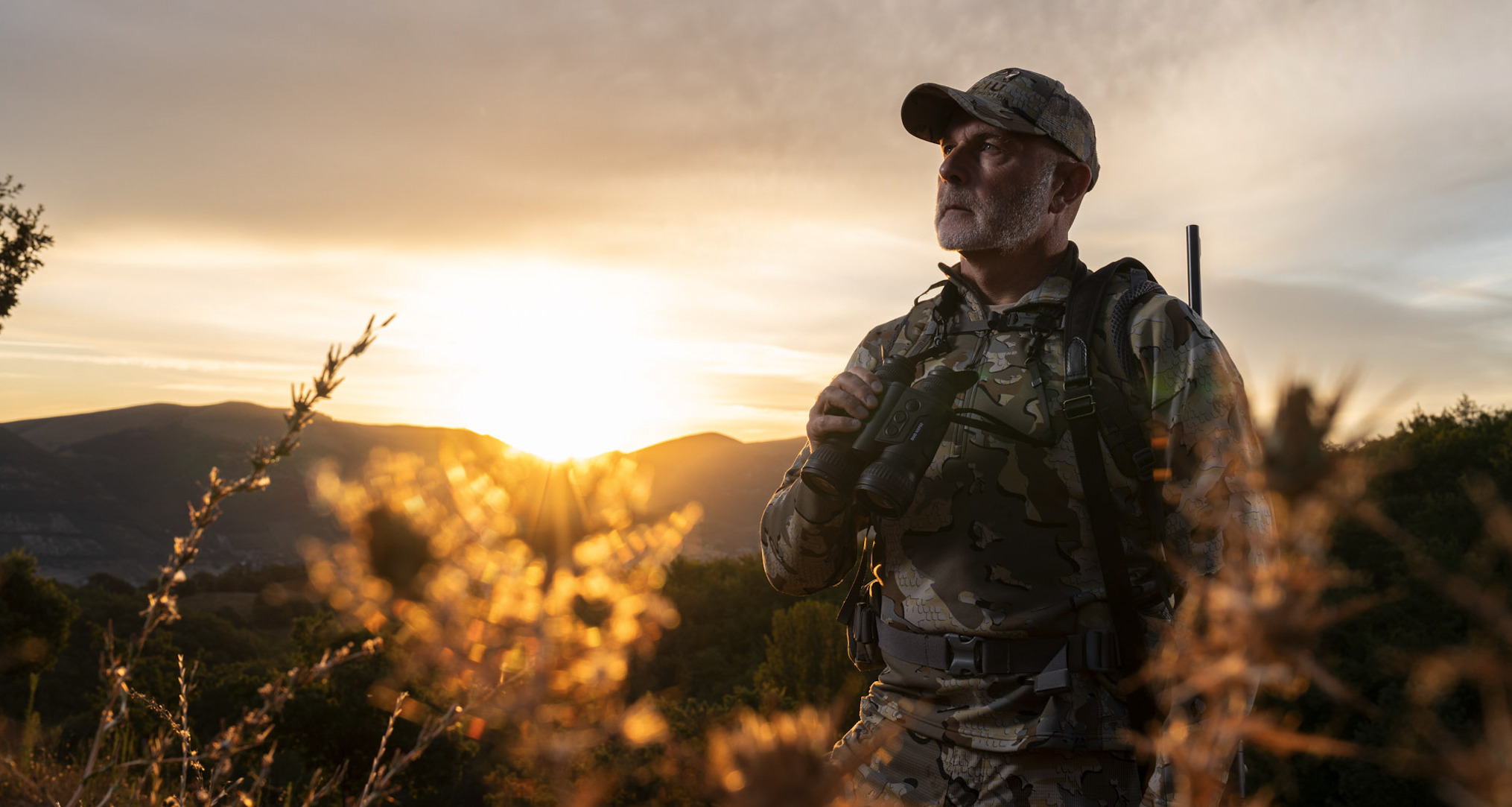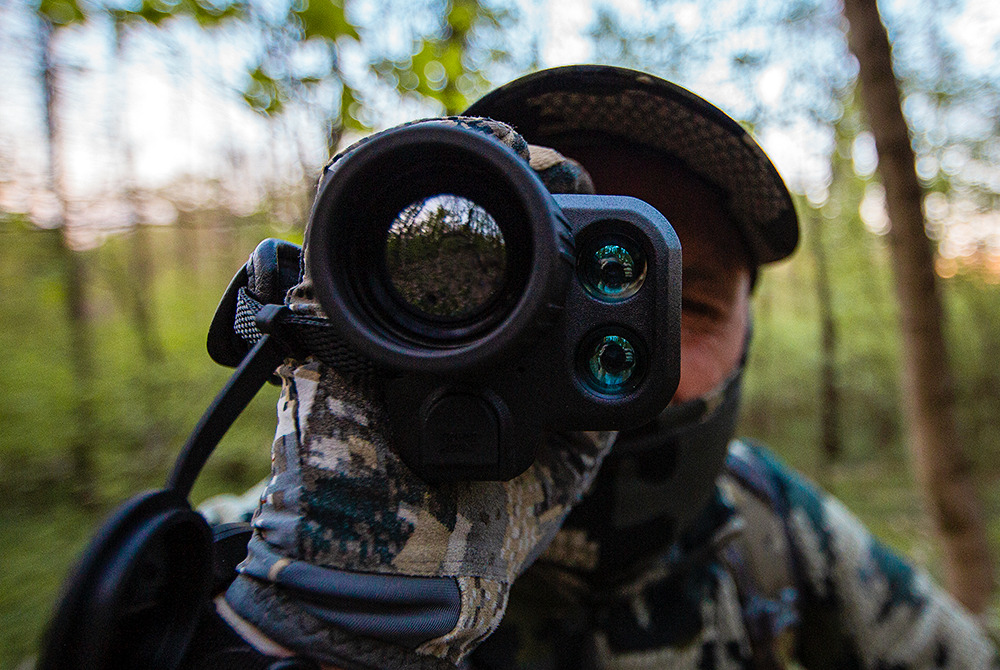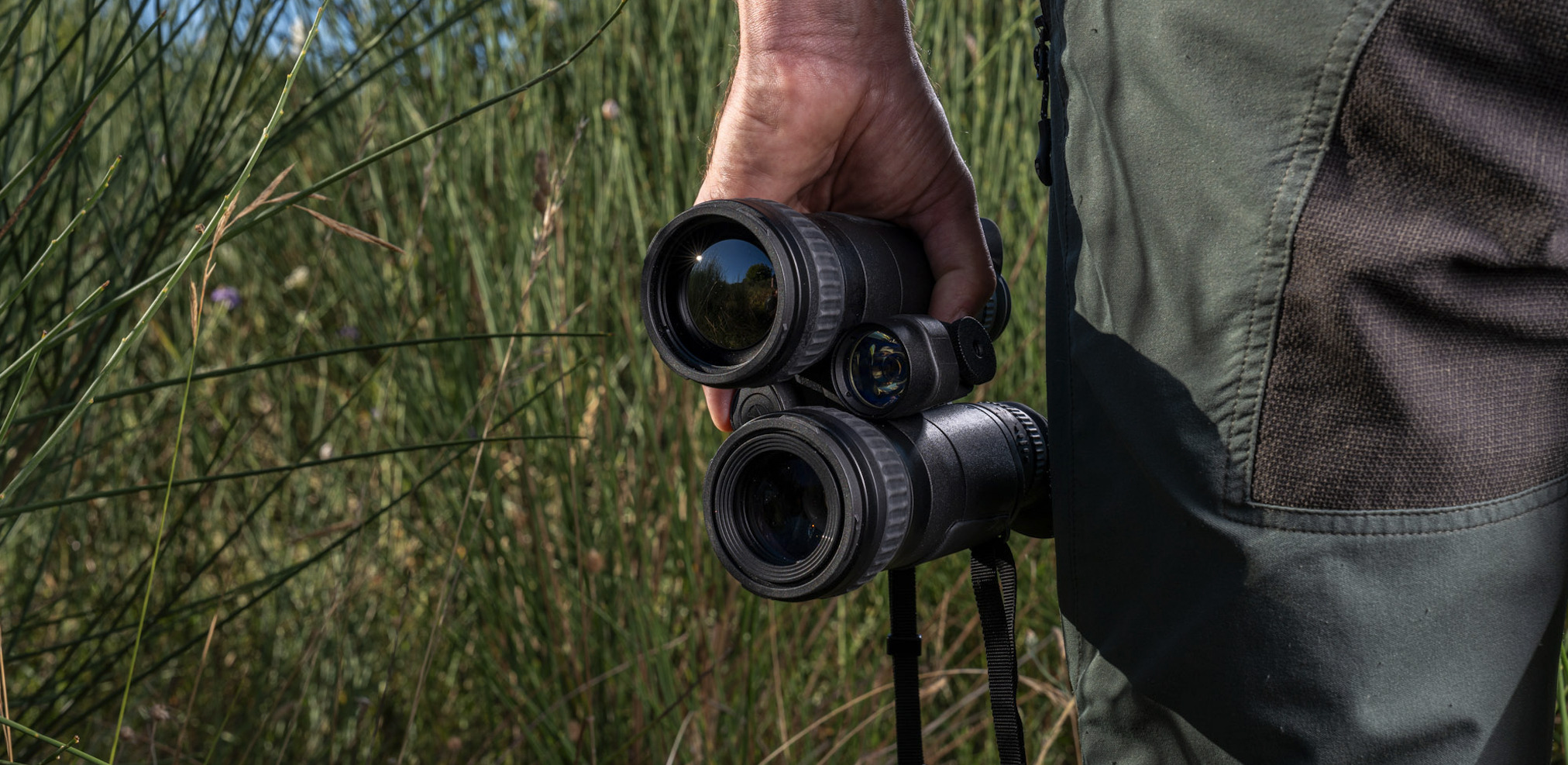With seasons changing, you’re likely changing your gear, too. But what about thermal vision? Do you need to go for different devices? Do you adjust settings? How do seasons influence the use of thermal altogether? We asked Riccardo Tamburini, an Italian hunter and a true thermal expert, to share his tips and insights about the effect seasons have on the use of thermal devices.
Different season, different device
Seasonal changes mean different hunting styles and practices, so different devices will shine during particular seasons. It is especially apparent with thermal scopes, as varying animal habits dictate a change in shooting distances.
For example, here, in Italy, wild boars don’t stay in the woods during spring and summer because they can’t find food (no chestnuts or acorns) there, so it’s easier to find them in an open space looking for worms and tubers in the grass. This behavior could mean longer shooting distance and require more knowledge about evaluating distance and shooting. That’s why, for these situations, I prefer a high-end device with a built-in laser rangefinder, like the Pulsar Thermion 2 LRF line.
During the autumn and winter, the situation is completely different: animals stay in the woods because there is a lot of food available – acorns, chestnuts, or mushrooms. Therefore, the shooting distance is around 40-80 meters, so I could also use a mid-level device, like the Talion, to classify animals based on their sex and age class.
However, generally speaking, a multipurpose device like the Pulsar Thermion 2 LRF XL50, with its wide field of view and the possibility to have a clear image on different zoom levels, could be the cleverest solution in every possible situation.
If you think you need something more, then the answer is a multispectral device, a technology introduced to the market in 2022 by Pulsar with Thermion Duo and now followed by the first multispectral binoculars, the Merger Duo NXP50. Thanks to this incredible device, the user has the possibility to match two different technologies in only one instrument: thermal with a powerful 640×480 sensor with a great NETD value (less than 25 mK), which allows you to detect the smallest details like the nipples of a wild boar female during nursing; and digital, with a FHD camera, which gives the observer the chance to see what a thermal camera will never give you, thanks to the high standard of its grayscale.
The limit of digital technology is the bad weather, like foggy or rainy days, and the presence of a dense cover, but it’s unpassable regarding the amount of details delivered in an open space up to 200 meters on a clear night. The ability to switch between the two combined technologies is fast and easy – all you need is a simple press of a button.
Preparing for every situation
I think that the best scenario is to pair the use of a thermal scope with a thermal spotter to have the chance to observe the environment all around you and always be ready to shoot. This way, you will always have your needs covered.
You have to consider that the use of a high-end thermal spotter, such as the new Pulsar Telos LRF XP50, becomes very helpful during autumn and spring when the census is made. It gives you the possibility to better and easier understand which kind of animal you are seeing: specimens, sex, and age class. With that kind of device, you can even easily see the male’s antlers and count their tips.
You have to consider that the use of a high-end thermal spotter, such as the new Pulsar Telos LRF XP50, becomes very helpful during autumn and spring when the census is made. It gives you the possibility to better and easier understand which kind of animal you are seeing.
Riccardo Tamburini
Adjusting settings based on the weather
The settings are completely different from summer to winter. During the summer, the environment absorbs a lot of heat during the day, so at sunset, you can have a lot of false targets like rocks or stumps, making it more difficult to see animals.
In this case, you have to set the contrast to a very low value (2/20) with a mid brightness (8/20). The best color palettes are Sepia or White Hot because the background is darker, and you’ll suffer less eye fatigue. In order to have as many details as possible, I also use the Black Hot palette, but only for a short time.
If you want to see the mood of the animals (it’s easier to see them in the open space during summer), it’s fun to use the Rainbow palette, which shows you the distribution of the temperature in the animal body.
During winter, the situation is different: you have the best conditions to spot the animals in the dark, although it will be more difficult to see all the environmental details. I increase the contrast to around 8/20 because a low contrast would give me a background that’s too light. Yes, you can balance it by decreasing brightness, but I prefer to have medium values for both settings. During winter, on rainy or foggy nights, I prefer to use White Hot, Sepia, Violet, or Red Monochrome.
Another aspect to consider is that during the summer, you have leaves on the plants, and it’s more difficult to detect animals, so you’ll need a really good spotter – perhaps the Pulsar Merger LRF XP50 would be the best for the job. But during winter, it is easier: you can also use a more economical device, like the Axion 2 LRF XQ35, to spot animals from far away, although it will be more difficult to understand sex and class age.
The short summary
Having different devices for different seasons is a privilege few of us can actually afford, and that’s why I recommend choosing really high-quality devices in the first place. By having one good spotter and one good scope, you’ll cover all your needs throughout the year.
When purchasing thermals, consider the situations in which you will be using the devices the most. If you constantly find yourself hunting in poor, humid weather, you’ll need a lower NETD to be sure you won’t miss important details. If you prefer stalk hunting, you’ll need to get the best possible quality in a compact body. And if you do longer-distance shooting more often than shorter distances, you’ll either need a bigger sensor or a higher base mag.
Before purchasing any night or thermal vision device, please make sure you adhere to the local legislation and only use it when it is allowed. Our ambassadors come from various countries and travel a lot, which allows them to test different devices. We do not encourage or support the illegal use of our devices in any events. If you wish to learn more about export and sales restriction policy, please visit the following link: Export and Sales Restriction Policy.


